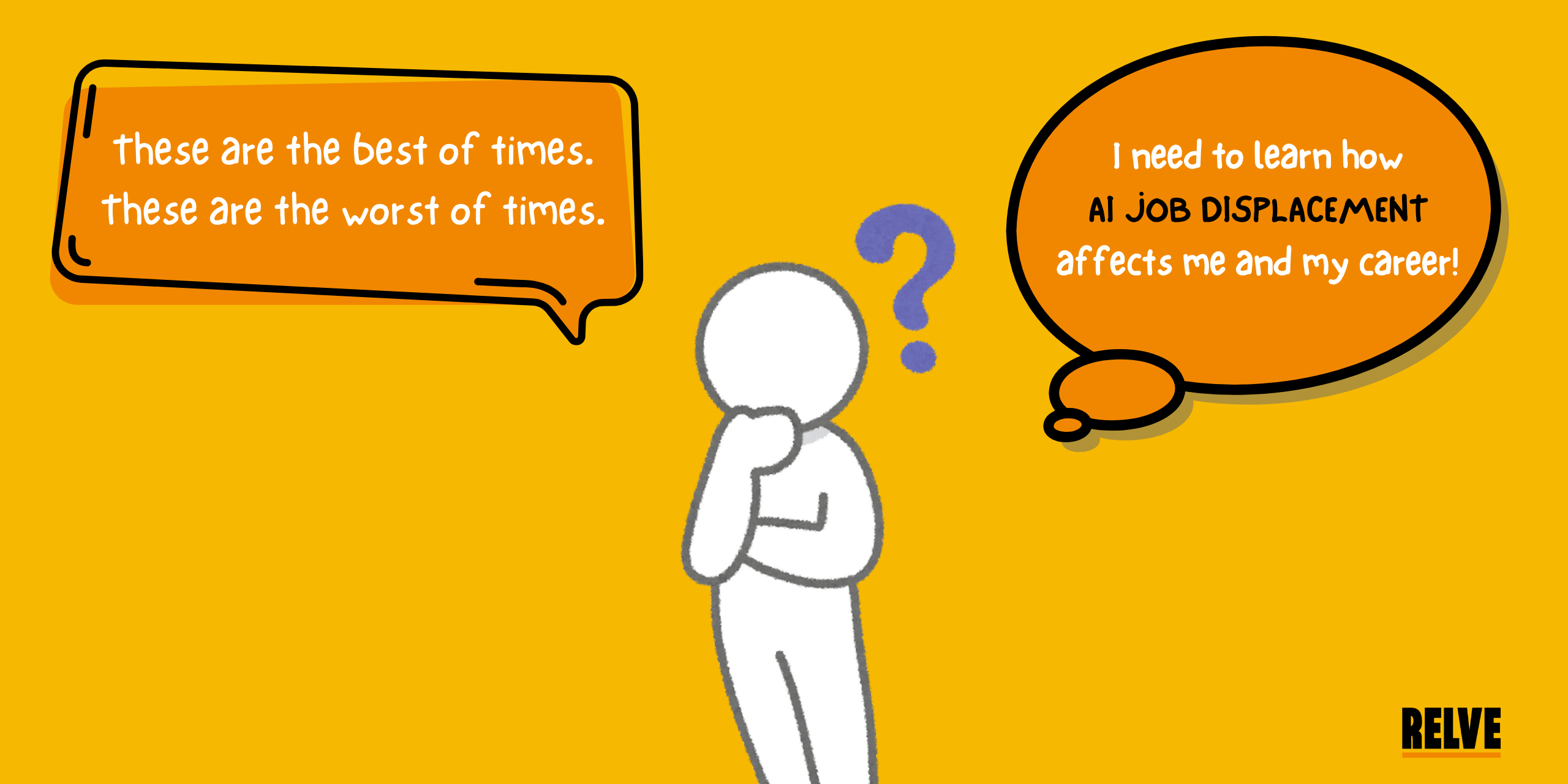Not long ago, we feared robots would take over the world. Turns out, they just want your job. Imagine walking into your office, coffee in hand, only to find out an algorithm or code is now doing your work faster, cheaper, and without coffee breaks. That’s not a sci-fi plot. It’s real. AI job displacement is hitting industries hard. From customer support to content creation, machines are silently pushing humans out.
But this blog isn’t all doom and gloom. You’re going to learn where AI is causing the most shake-up, who it’s affecting, and most importantly, what you can actually do about it. We’ll look at sectors at risk, demographic shifts, and some actual AI job displacement solutions that go beyond “just learn to code.”
Current Landscape of AI-Induced Job Displacement
Let’s talk numbers. 14% of workers have experienced job displacement due to AI. That’s not speculation. That’s reality.
🟧 Prediction Poll
Select to guess: How many jobs will AI take over globally by 2030?
McKinsey projects that by 2030, between 400 million and 800 million people may be displaced due to automation and will need to seek new employment opportunities.
But here’s the twist. AI isn’t just replacing jobs. It’s transforming them. So instead of being replaced by AI, many workers are being asked to work alongside it. Not everyone gets that memo though.
This shift is what makes job displacement due to AI so complicated. You might still have your job title. But the tasks? They’re quietly being automated one by one.
Sectors at High Risk from AI
So, who’s first in line for a machine takeover? Let’s break it down.
Job Role Risk Matcher
Drag each job role to its correct category below:
Manufacturing
Assembly lines were already automated, but now AI is optimizing workflows, spotting defects, and even managing supply chains. Humans? Mostly supervisors at this point.
Customer Support
ChatGPT-like bots are handling customer queries 24/7. They don’t sleep, get sick, or take lunch breaks. Businesses love it. Workers? Not so much. This is classic AI automation job displacement in action.
Data Entry & Admin Roles
Remember when a team entered data into spreadsheets all day? Now one script does it in minutes. The admin team isn’t gone overnight. It just shrinks quietly.
Creative Jobs
Think you’re safe because you're creative? Think again. AI now writes blog posts, designs logos and even composes music. And yes, it can generate art faster than most humans.
All these shifts are signs of AI displacing jobs, not just blue-collar but white-collar too. No role is too safe if it’s predictable, repetitive, or rule-based.
Demographic Impact of AI Job Displacement
Who’s actually feeling the heat?
AI Fear Heatmap
Click your age group to see how likely you are to fear being replaced by AI.
Young workers, especially those aged 18 to 24, are 129% more likely to worry about losing their jobs to AI than those over 65. That’s not just youthful anxiety. They’re entering a market where job displacement AI is already baked into hiring decisions.
The education level also matters. Workers without degrees are more vulnerable to automation. The more routine your job is, the higher your chances of being replaced.
But it’s not all generational. AI doesn’t discriminate. It will reshape the lives of coders, call center agents, and designers alike. It will reward those who adapt. And leave behind those who don’t unless we do something about it.
This is why developing your emotional intelligence skills and having a solid personal development plan is no longer optional. It's survival.
Potential Solutions and Mitigation Strategies
Let’s be real. You can’t out-code AI. But you can out-human it.
🛡️ Build Your AI Career Survival Plan
Select the actions you’ll take to future-proof your career:
1. Reskill and Upskill (Like, Now)
Jobs that need empathy, critical thinking, leadership, or creativity are harder for AI to mimic. So, if you’re not upgrading your skills, you’re basically standing still while the world zooms past.
Digital literacy isn’t just a tech skill. It’s a job-preservation plan. Even basic familiarity with AI tools can make you valuable.
Learning how to use AI doesn’t make you a machine. It makes you employable.
2. Government and Company Support
Some companies are investing in AI job displacement solutions like training programs or internal mobility schemes. Governments are catching up slowly with workforce development grants and transition support funds.
3. Ethical AI Use
This one’s for the big guys. Organizations need to be transparent about when and how they’re using AI. And maybe not replace an entire department overnight?
Policies matter. Ethics matter. The ai impact on job displacement isn't just a tech issue. It's a human one.
Conclusion
Can AI lead to job displacement? It already has. From factory lines to office desks, the shift isn’t coming it’s here. But this isn’t your cue to panic. It’s your cue to level up. Learn the tools AI works with, not the ones it replaces. Build skills that tech can’t mimic. The AI impact on job displacement isn’t just a tech story. It’s a human one. And how does it end? That’s up to you.
Because while AI is fast, it doesn’t feel. It doesn’t connect. And it can’t replace the value of a person who knows how to think, feel, adapt, and lead.
You just have to prove you’re one of them.
Myth vs Fact: AI Edition
Tap or click to flip the card and uncover the truth.
🧠 Myth
"AI is only taking blue-collar jobs."
✅ Fact
False – white-collar roles like legal assistants and marketers are also at risk.
